It's hard to believe that, prior to Half-Life 2, Valve had really made only one game. Of course, it was a masterpiece. Half-Life single-handedly reinvented the first-person shooter, putting the emphasis on cinematic pacing and complete immersion in the experience. As a result, it paved the way for many of the outstanding first-person shooters that have followed. And while there was little question that there would eventually be a sequel, no one could have imagined the long and torturous development process that led to Half-Life 2. Well, it's time to forget about that, because Half-Life 2 has arrived. And, in many ways, this big-budget sequel does what it sets out to do: Half-Life 2 is a technically amazing, sharply honed first-person shooter that pulls all the tricks that made Half-Life such a beloved experience. With that said, many of those tricks feel more than a bit familiar now, and the game itself is saddled with a disappointing story. Still, that doesn't stop Half-Life 2 from being a very impressive and engaging shooter, and a faithful follow-up to one of the greatest PC games of all time.
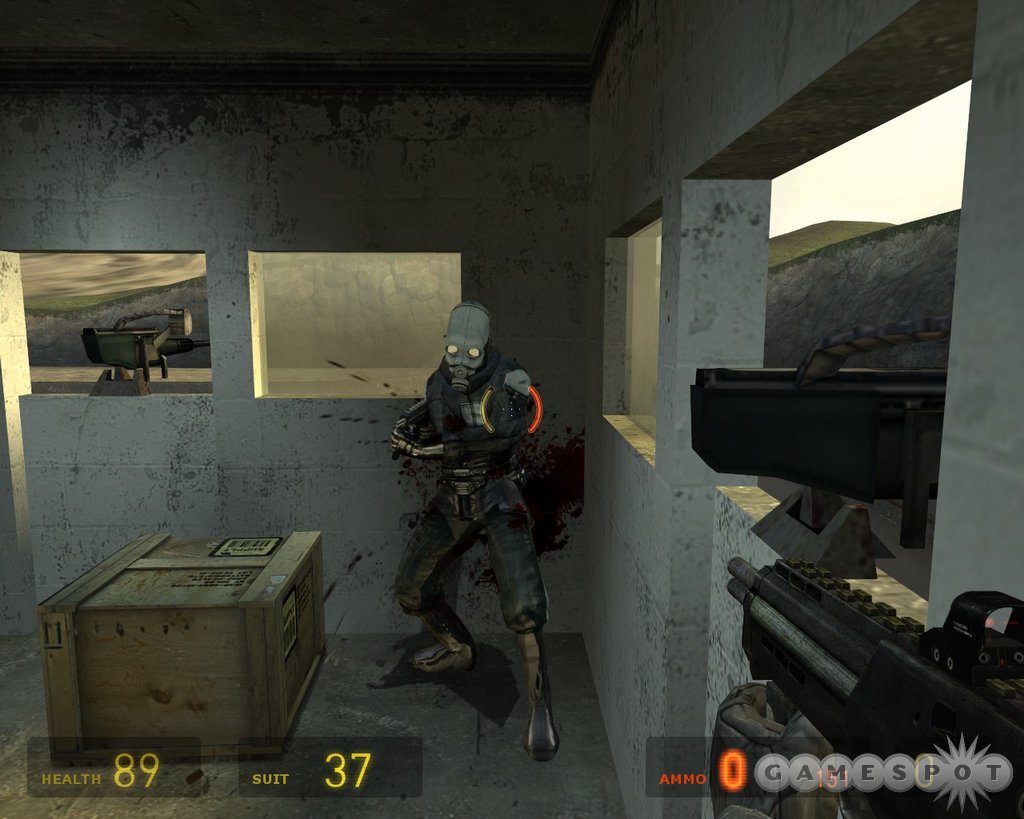
In Half-Life 2, you once again assume the role of Gordon Freeman, the theoretical physicist and dimension-hopping commando who saved the world from an alien invasion at the end of Half-Life. Or did he? Half-Life 2 starts you off facing the infamous G-Man, the mysterious blue-suited character from the first game. At the end of Half-Life, the G-Man offered you a choice: work for him or die. Since there would be no sequel if you chose the latter, Half-Life 2 assumes you chose the former, and you start the game in a train entering City 17 for your introduction into this new world.
City 17 is a run-down urban center that's the equivalent of the Warsaw ghettos during World War II, but instead of Jews being rounded up to live in City 17, it's all the remnants of a defeated humanity. Half-Life 2 takes place an untold number of years after the Black Mesa incident, but it's clear that much has changed. A mysterious enemy known as the Combine has conquered the planet and installed a human puppet government to carry out its rule. Black-clad security forces patrol the streets, while propaganda blares endlessly from omnipresent video screens. If there's one thing that Valve does extremely well, it's capture a sense of atmosphere--this vision of a dystopian police state is chillingly effective. But you won't spend a lot of time soaking in the scene before you're thrust into the struggle to defeat the Combine and free humanity.
As soon as the shooting begins you'll join an essentially nonstop battle that will last the remainder of the game. Like the original Half-Life, Half-Life 2 is presented as a nearly seamless experience--you play entirely from Gordon Freeman's perspective, there are no cutscenes or perspective changes to take you out of the moment, and are there no narrative jumps that skip ahead in time. (At least, there are none from your perspective.) There also aren't very many long loading times to interrupt the flow of the game, as all the levels are discreetly broken into sections, and when you transition from one section to another, there's only a slight pause for the new section to load (at least, on a high-end PC). Put it all together and the game's single-player campaign, which will probably take you between 15 and 20 hours to complete, comes off as a very long day in the extraordinary life of Gordon Freeman.
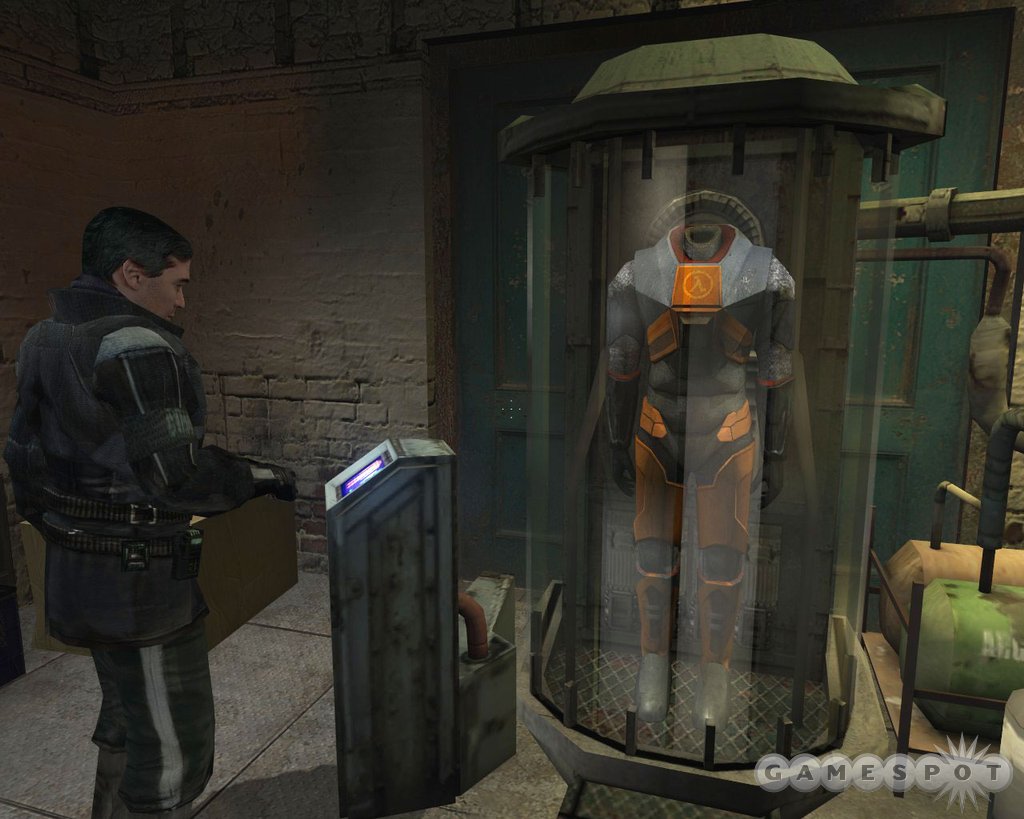
The original Half-Life was highly cinematic in nature, the virtual equivalent of starring in your own blockbuster sci-fi action movie. Who could ever forget the first time a headcrab leapt out at you from a dark corner? Or the moment when the commando tossed a satchel charge into the sewer pipe you were hiding in? The movie analogy is apt, not only because Half-Life 2 packs a few cinematic moments of its own, but also because, like most movie sequels, it plays it safe and doesn't deviate much from its storied predecessor. Half-Life 2 doesn't revolutionize the genre, instead sticking with the familiar formula of run-and-gun action, occasional puzzle-solving, and scripted sequences established by Half-Life. And it's an effective formula, for the most part. The game gets off to a rousing start, as the opening levels combine these three ingredients masterfully. You start off on the lam from the Combine, armed with only a pistol and your wits, and embark on a chase through a train yard and tunnel system that's filled with all sorts of hairbreadth escapes. The sense of pursuit hurtles you forward so quickly that you don't have much time to admire the cutting-edge graphical prowess on display.
After you reach safety, Half-Life 2 settles into a more conventional and familiar style of play. Aside from a detour through a deserted town full of all sorts of booby traps, there are a lot of echoes of the original Half-Life in Half-Life 2--so many, in fact, that there's a strong sense of déjà vu at times. Still, it's hard to knock Valve for not wanting to tinker too much with a proven formula, and Half-Life 2 is as fast-paced and enjoyable as its predecessor.
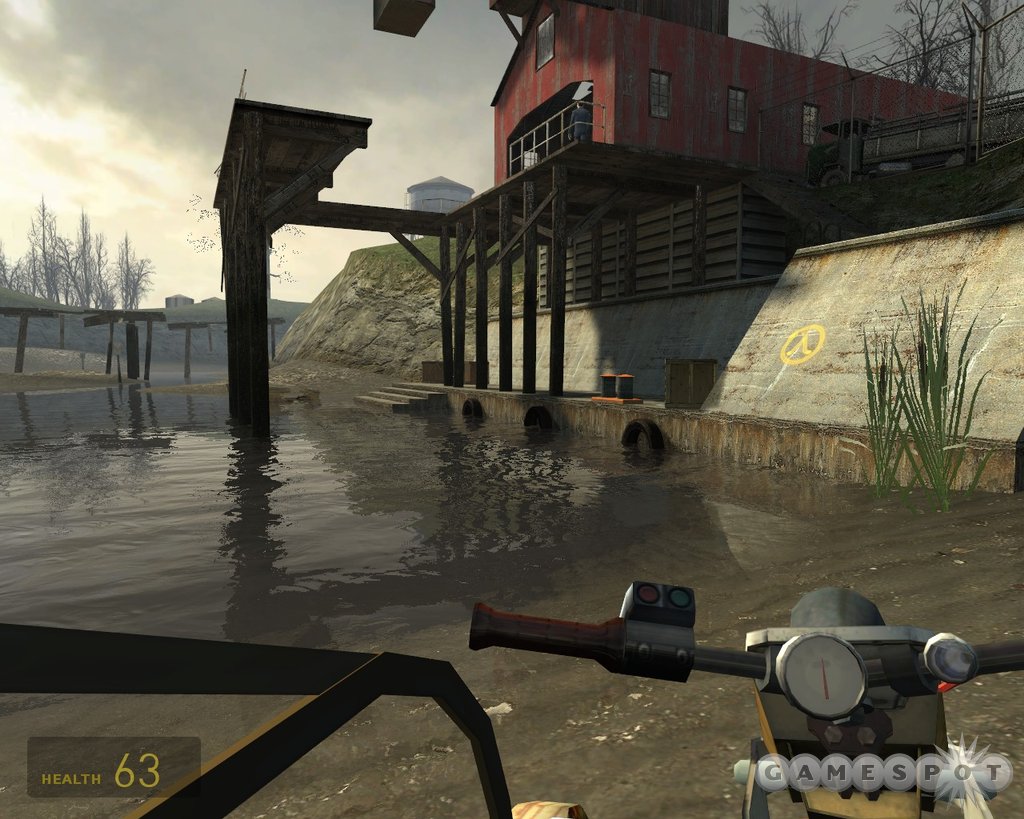
Clad in your rugged hazard suit, you'll battle your way forward against all manner of enemies, only to recover quickly by picking up health packs and recharging your hazard suit at energy stations. Some of these foes are familiar, such as the headcrab and the barnacle, while others, like the manhacks (essentially flying buzz saws) present whole new challenges. Meanwhile, you'll be armed with a formidable arsenal, most of which is recycled from the first game, such as the submachine gun, shotgun, crossbow, and, of course, the ubiquitous crowbar. These weapons haven't changed much, and they feel roughly the same. There are only three new weapons, including the pulse rifle, which is a sort of beefed-up energy rifle with a devastating secondary attack and a meaty sound to it. Much more fun are the pheropod--otherwise known as "bug bait"--which allows you to summon and control vicious ant lions, and the gravity gun, which can be used to pick up and manipulate objects.
The gravity gun is one of the great new features introduced by the game. Thanks to the new physics engine, it has all sorts of applications in and out of combat, and you'll spend a lot of time tinkering around with it. It's just as useful for picking up and hurling a grenade back at an enemy as it is for solving any number of puzzles in the game. Most of these puzzles are clever but not too difficult, particularly if you've played previous shooters, like the original Half-Life. Half-Life 2 also features a fair number of jumping puzzles, though nothing on the frustration level of Xen in the original game. The jumping puzzles are a weakness in Half-Life 2, but thankfully you can take a more aggressive approach and bypass most of the jumping altogether.
The other noteworthy additions to the gameplay are vehicles, specifically an airboat and a high-speed buggy. While these sequences offer a visual rush, they're also not too far removed from some of the rail sequences in the original Half-Life. In many instances, you'll be funneled down a narrow channel or road with little chance to explore or veer off the beaten path, battling enemies in a high-speed engagement. You'll then encounter an obstacle that requires you to jump out of your vehicle and solve a puzzle to proceed. The controls and physics in these sequences are a bit loose, but the vehicles are fun to drive, especially when you get some room to maneuver.
You'll be on your own during most of the game, but there are levels in which you'll have the opportunity to fight alongside allies, both alien and human. Some of the best team moments come later in the game, when you're battling the Combine in the streets and buildings of City 17, with large-scale battles going on between groups of humans and the Combine's huge, spiderlike striders. You never really develop any attachment to your teammates, though, as they tend to be very disposable, and replacements are available at regular intervals. And teammates have a tendency to get in your way in cramped interiors--while they'll slowly move out of your way, it's still a little annoying. In addition to taking on teammates, you'll occasionally have the opportunity to set up sentry guns to assist you in defense. The toughest sequence that we encountered in the game involved setting up a handful of sentry guns in a defensive alignment, and then holding out against waves of incoming Combine soldiers.
Surprisingly, Half-Life 2's story is one of the most disappointing aspects of the game. The first half of the game feels a bit unfocused, while the second half seems rushed. Even worse, the story leaves behind a mess of unanswered questions, and it doesn't touch on any of the lingering questions left over from the first game. Valve likes to leave tantalizing hints and tidbits everywhere in the game, but few of these actually develop into anything interesting, and by the end you're left wondering what the game was all about. In many ways, Half-Life 2 feels like the middle chapter in a much larger story, and it suffers as a result.
Another surprise is the somewhat disappointing performance by the game's artificial intelligence. Even on the tougher difficulty levels, most of the humanoid enemies don't seem to show the same kind of intelligent behavior that they did in the previous game. They'll seek cover and then peek out to fire, but invariably they'll charge at you, making it easy to take them down. And maybe it's due to some of the weapons being a bit overpowered, but most opponents don't present much of a challenge at all--a few rounds is usually enough to stop them. There are a few fearsome foes in the game, not the least of which are the larger ant lions, which will tirelessly pursue you while you frantically unload every bullet you have at them. Then there's the strider, the 50-foot-tall, walking, organic tank that fires devastating bursts and can spear you with one of its legs if you get too close. But for the most part, Half-Life 2 is a surprisingly easy game, even on the tougher difficulty levels. Case in point is the end of the game, which feels anticlimactic--you're given a horrendously overpowered weapon to use against relatively weak opposition.
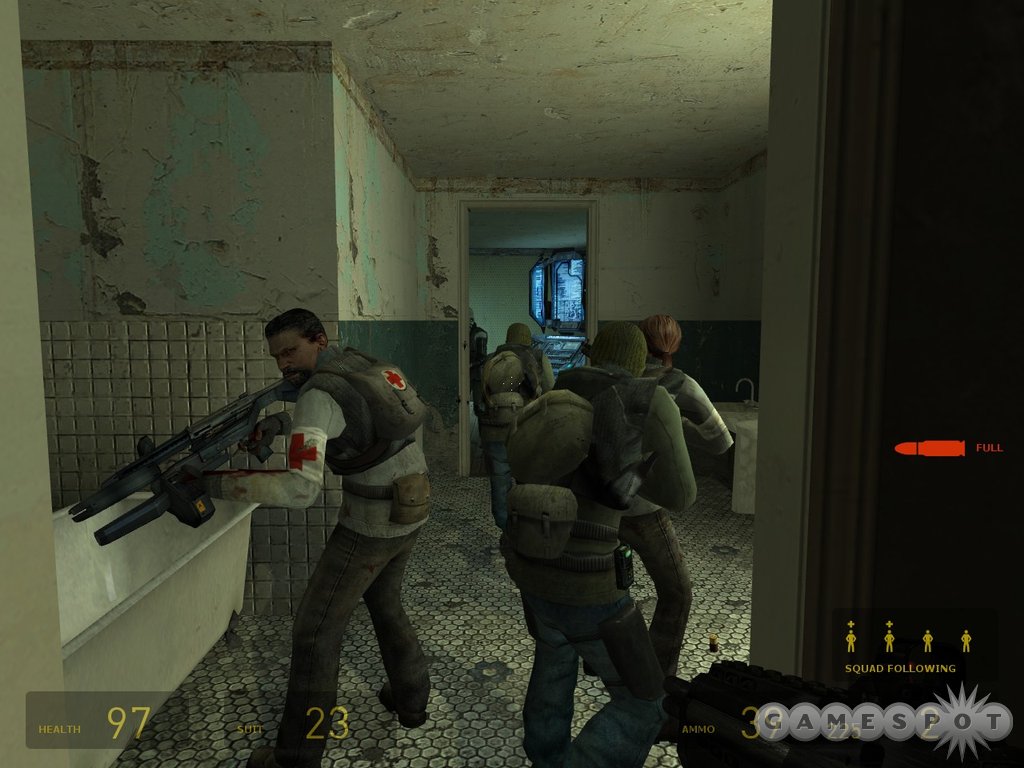
Half-Life 2 uses a checkpoint save system, allowing you to quickly restart at the last checkpoint if you die, and there's usually a checkpoint right before most of the game's combat zones. The checkpoint system is effectively employed throughout most of the game, and it allows you to immerse yourself into the experience without having to worry about saving the game constantly. Saving the game manually is an option, and it's helpful in one or two passages where the checkpoints are spaced too far apart, but it also takes you out of the moment.
Half-Life 2's presentation is extraordinary, thanks to the new Source engine. Even though Half-Life 2 debuted a year later than originally anticipated, it is still very much a cutting-edge game, featuring state-of-the-art graphics technology. While Doom 3 features superior lighting and shadowing, it didn't really succeed at bringing a credible and cohesive world to life. Half-Life 2 does, and the environments in the game are simply stunning, from the plazas and streets of City 17 to the rusted interiors of an abandoned factory. There's also some excellent level design in the game, including a deserted town full of deadly traps and the gaping interiors of an alien citadel. The engine does a great job of rendering both indoor and outdoor environments, and there's a lot of eye candy to absorb if you have the hardware to handle it. Most surfaces nearly glisten with the latest shader effects, and the textures are sharp and richly detailed.
One of the big new features is the incorporation of physics into the engine, and that has an effect on the visuals as well. Basically, everything moves and behaves as it ought to, so when you hammer a strider or a gunship with a rocket, it shudders and recoils from the impact. Characters also move in a lifelike manner, and the animations are smooth and believable. You'll also discover that objects in the environment can be used against you--there's nothing that zombies like more than to hurl a metal barrel in your direction. On the other hand, you can use the gravity gun to hurl objects about, or even to pick things up and use them as a shield.
While Gordon Freeman doesn't say anything, you'll quickly discover that some of the best parts of the game are when a character has a one-sided conversation with you. This also lets Valve showcase its remarkable new facial technology, which brings human characters to life like never before. You can literally see the gleam in characters' eyes when they speak, and they can display a wide range of emotions, from fear to familial pride. It also helps that Valve enlisted notable talent to supply the voices for many characters, including Robert Guillaume, Louis Gossett Jr., Robert Culp, and Michelle Forbes. The voice acting is superb, and the script itself features wit, warmth, and humor.
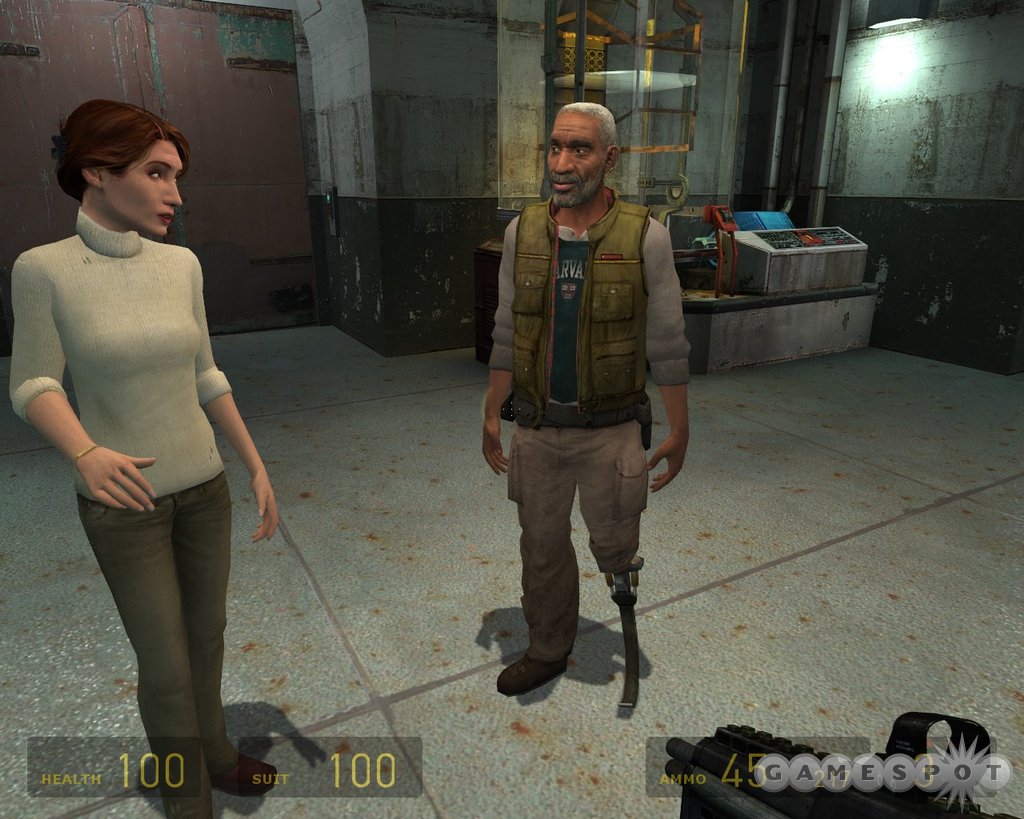
The sound effects are also well done. Once again, it's the little details that stand out, like the buzzing noise of manhacks as they approach and the clatter of a gutter pipe as something climbs up to reach you. As in the original game, there's very little music, and what's here is electronic in nature and reserved to emphasize important moments, such as when you're headed for a showdown with a major foe. Most of the music is forgettable, but there are a few standout themes, one of which is recycled from the original game.
Meanwhile, the multiplayer aspect of Half-Life is veritably a game in and of itself.
Rather than build a new multiplayer component based on the single-player campaign, Valve has instead included Counter-Strike: Source with Half-Life 2. The original Counter-Strike was developed as a free team-based multiplayer mod for the original Half-Life, and it quickly grew into one of the most popular online first-person shooters in the world. Valve even released a retail package of Counter-Strike, and earlier this year there was an updated retail version, Counter-Strike: Condition Zero. Counter-Strike: Source is the updated version of the original Counter-Strike, bringing the graphics in line with the powerful new Source engine and making a few tweaks, but otherwise keeping everything else the same.
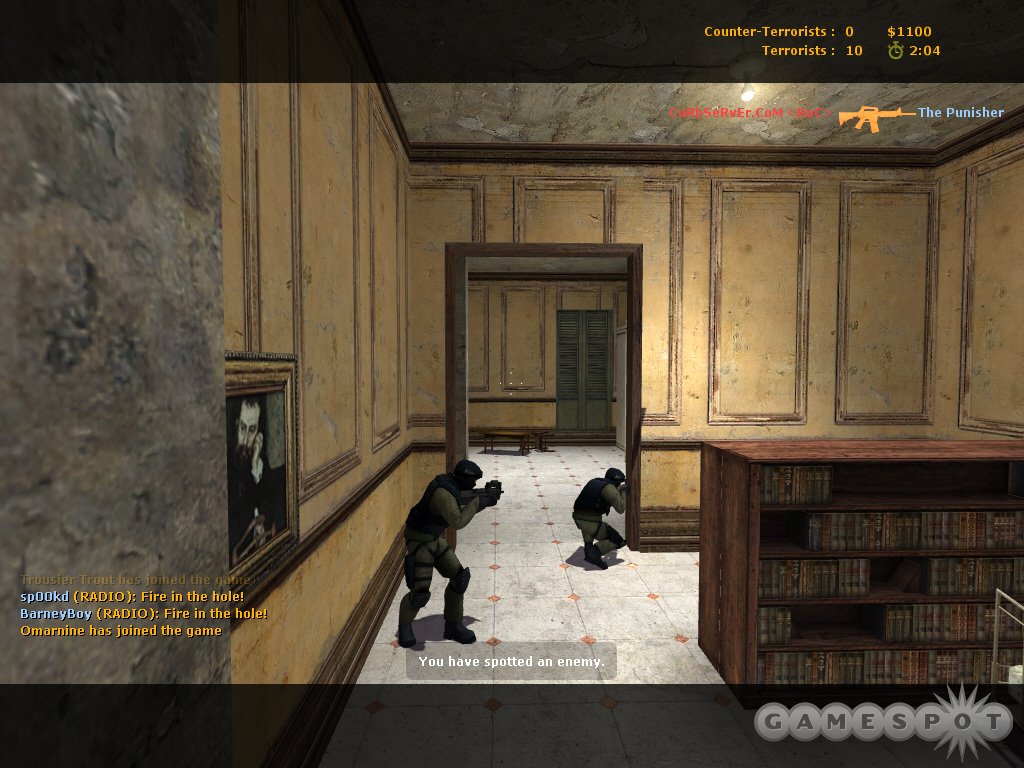
If you've missed out on the Counter-Strike phenomenon these past five years, the idea behind the game is simple: Two teams--the terrorists and the counterterrorists--battle it out in a series of fast-paced rounds to see who will win a match. The easiest way to win a round is to simply eliminate the other team, but there are other routes to victory, depending on the map. For example, counterterrorists can attempt to rescue hostages and deliver them to safety, while terrorists can plant bombs and protect them until they explode. Your success can influence your success in future rounds, as there's a monetary reward for your team's performance, which you can use to purchase realistic weapons and equipment for the next round.
Counter-Strike: Source features updated versions of some of the most popular Counter-Strike maps, including Dust and Office. Since these are essentially the same maps that have been played since 1999, they were battle tested and balanced years ago. There have been some improvements, however. Counter-Strike: Source implements a physics engine that lets you push objects around using gunfire, though this has relatively little tactical value in the game--you can't barricade a doorway with desks, or drop an object onto an enemy below.
Nevertheless, there's little question that Counter-Strike: Source is an exciting, well-balanced game of tactical combat. It's also a highly social game. Its appeal lies in the fact that even if you're killed early, you can still sit back and chat with other players, or simply watch the match. Since each round lasts only a few minutes on average, there's not much downtime before the game resets and you're blasting away again. Finding a game isn't a problem, either, as Valve released Counter-Strike: Source more than a month before Half-Life 2, and there are hundreds of servers and thousands of players online at any given time during the day. Meanwhile, the standard built-in server browser can get you online in seconds, and you can sort by number of players, ping, and map.
Admittedly, for a beginner, Counter-Strike: Source can be a daunting experience. It's easy to feel like an outsider, as an entire culture has evolved around the game, and most of the players online know what they're doing, which can be intimidating. On the other hand, Counter-Strike: Source is relatively easy to pick up, and it doesn't take too long to become proficient at it, though it will take far longer to reach the skill level of the better players online. Then again, the release of Half-Life 2 should mean lots of new blood on the Counter-Strike circuit.
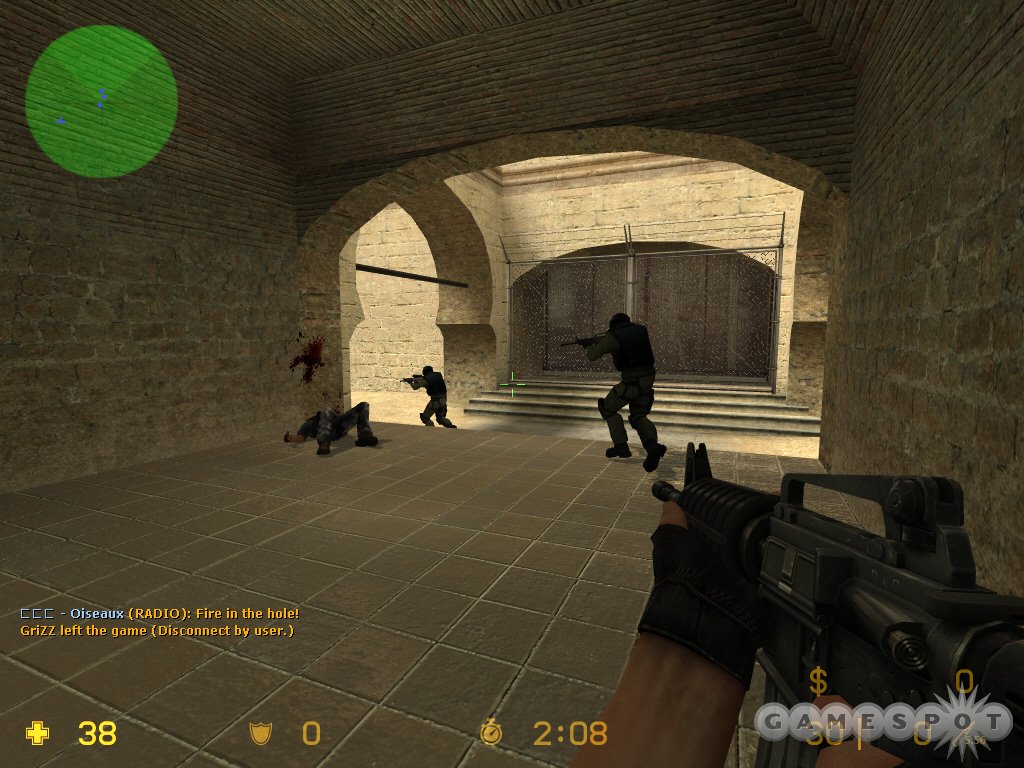
While it's hard to argue against Valve including Counter-Strike: Source with Half-Life 2, it would have been nice to have seen a multiplayer mode based on the single-player game that takes advantage of some of the single-player game's settings and weapons. The original Half-Life shipped with such a mode, and it was fun to play with some of those settings and weapons in a multiplayer arena. There are some genuinely interesting weapons in Half-Life 2's single-player mode, and it'd be fun to see what the gravity gun, for example, could do in a multiplayer setting, particularly with all the physics turned on. Still, Counter-Strike: Source is capable of providing countless hours of online play if you're a fan of team-based shooters, and it's a safe assumption that the game isn't going to cool off anytime soon.
When you combine the strong single-player campaign of Half-Life 2 with the popular online play of Counter-Strike, the result is one of the most complete and compelling first-person shooter packages available. While Half-Life 2 breaks little new ground, it's still a superb and engaging first-person shooter, as well as an amazing technological accomplishment.